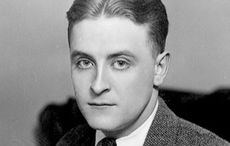Way back in the mists of time, a hero came to Scotland from Ireland. With three massive steps, he came bounding over from the green swards of the Emerald Isle to the Isle of Skye. Hanging off his thighs and traveling with him were 80 other people: 80 more on each arm; nine more spinning in his hair. He came to Scotland to compete his education as a fosterling with the Warrior Queen Sgáthach; to learn to battle and love. As a gift in return, he gave the game of shinty to Scotland.
Historians, though uncertain about exact chronologies, generally testify to the both the antiquity and commonality of the ball and stick games of the Irish and the Scots. The above legend of the Queen Sgáthach and the origins of camán in Scotland, quoted by my good friend, Hugh Dan MacLennan, the Mícéal Ó Muircheartaigh of Scotland, captures through metaphor the common heritage of the Irish and Scottish national games. ‘The game of camanachd’, MacLennan continues, ‘is peculiar to the Celts of Scotland and Ireland - peculiar that is to say, to the old Scottish or Gaelic-speaking people’. Shinty - iomain or camanachd in Scottish Gaelig - was introduced along with Christianity and the Gaelic language to Scotland around 1500 years ago by Irish missionaries. It is noteworthy that Saint Colmcille is believed to have arrived in Scotland as a result of a little local difficulty at an Irish hurling match! Born in c.521 A.D. in Donegal, Colmcille is actually the first historical person to be referenced in connection with the ancient game.
--------------------
READ MORE:
Irish or British - Rory McIlroy can call himself whatever he likes
Celtic Tiger McIlroy poster boy for peace in Northern Ireland
--------------------
Many respected academics and commentators on Scottish heritage acknowledge the Celtic Scots from Ireland as the originators of a pan-Celtic kingdom which once embraced the north of Ireland and the western seaboard of Scotland. Father Ninian Macdonald, the shinty historian claimed in the 1930s that:
Shinty is one of the oldest games in the world. It is nearly as old as the Gaelic language itself. Wherever in antiquity we find that language, be it in Ireland or Scotland, there, too, have we shinty with it...The oldest legends and myths, written over a thousand years ago, represent the mythic heroes of the Gael...as engaging in gigantic matches all over the lands of the Gael. At the dawn of history proper, with Columba (Colmcille) at Iona and King Brude at Inverness, we have historic evidence that the game was played...Camanachd is therefore a game of high antiquity.
Shinty is one of the oldest games in the world. It is nearly as old as the Gaelic language itself. Wherever in antiquity we find that language, be it in Ireland or Scotland, there, too, have we shinty with it...The oldest legends and myths, written over a thousand years ago, represent the mythic heroes of the Gael...as engaging in gigantic matches all over the lands of the Gael. At the dawn of history proper, with Columba (Colmcille) at Iona and King Brude at Inverness, we have historic evidence that the game was played...Camanachd is therefore a game of high antiquity.
A survey of the ancient Brehon laws of Ireland casts an illuminating light on the significance of camán.. Fostered children had to be provided with a hurley; bronze and copper ornamentation on the hurleys delineated between ranks of the sons of noblemen, and immunity was granted to a player who injured another during the course of play. The early Irish had a tremendous love of competition, be it ball games or the board games of winter – and some renowned students have traced the origins of chess to these early peoples. Gaelic scholars have recorded references to native ball and stick games back as far as the Battle of Moytura, near Cong, County Mayo, in 1272 BC between the native Fir Bolg and the invading Tuatha De Danann. The earliest Irish myths refer to the Tailteann Games, an ancient Irish sporting festival began by the god, Lugh – it was not unintentional (nor in a fit of modesty!) that the modern founder of the GAA, Michael Cusack, also went by the pen-name of Lugh Lámh Fhada. The Tailteann Games occurred annually during the Feast of Lughnasa (August 1) for almost 4,000 years until 1169 A.D.
Later medieval accounts of the early Irish sagas which outline the epic life and deeds of Cúchulainn, may be shrouded in the variables of folk memory but from these mythical mists emerge accounts of hurling spectacles, events and warriors, that show how central camán was to the Irish consciousness. The Scottish camanachd also traces its mythological ancestry with camán/iomain back to this Ulster cycle. In their brilliant 2009 exploration of the development of ball playing, camán, shinny (and yes, the informal ice hockey game of Canada goes by the same name) and hurling in the province of Ulster before the GAA in the acclaimed book, Ulaidh, Eire agus Eile, Art Ó Maolfabhail, Roddy Hegarty and Dónal McAnallen cast new light on the history and myth of Séadanta, (the gaelic for pathmaker, leader and later corrupted into Setanta), also known as Cú Chulainn. In so doing, they open up intriguing possibilities for Ireland as being an ancestral progenitor of golf, even before the Celtic cousins later settled across the sea in Scotland and fine tuned the modern version.
Later medieval accounts of the early Irish sagas which outline the epic life and deeds of Cúchulainn, may be shrouded in the variables of folk memory but from these mythical mists emerge accounts of hurling spectacles, events and warriors, that show how central camán was to the Irish consciousness. The Scottish camanachd also traces its mythological ancestry with camán/iomain back to this Ulster cycle. In their brilliant 2009 exploration of the development of ball playing, camán, shinny (and yes, the informal ice hockey game of Canada goes by the same name) and hurling in the province of Ulster before the GAA in the acclaimed book, Ulaidh, Eire agus Eile, Art Ó Maolfabhail, Roddy Hegarty and Dónal McAnallen cast new light on the history and myth of Séadanta, (the gaelic for pathmaker, leader and later corrupted into Setanta), also known as Cú Chulainn. In so doing, they open up intriguing possibilities for Ireland as being an ancestral progenitor of golf, even before the Celtic cousins later settled across the sea in Scotland and fine tuned the modern version.
It is related how at Eamhain Mhacha, one of the seats of power in ancient Ulster, Séadanta took part in a game of áin phoill – ‘the driving of a hole’ as it is called in the earliest version of the story, written down in Leabhar na hUidhre, (The Book of Dun Cow) in 1100 and used a lorg ána, or driving stick. In the later Book of Leinster version of 1180A.D. this game is called cluiche poill, meaning literally ‘the game of a hole’, and the words, báire, iomána (hurling) and camán (hurley) are introduced. Iomáin, literally meaning to ‘drive about’, was derived from áin, meaning to drive. The terms of lorg ána, áin phoill and cluiche poill have long been obsolete in an Irish context since. However iomáin has never gone out of use in either Ireland or Scotland, and later it developed another form iománaíocht, signifying hurling, and similarly the word camán, the hurley, is universally understood in Ireland and Scotland. It is possible that two different types of play may have been confused in the written stories of Cú Chulainn. Though it may be a subject of conjecture, there is no doubt, that this ‘game of the hole’ with its ‘driving stick’ does bear the traits of an early form of golf, but further references to this sport in the ancient gaelic tracts of Ireland remain elusive, and there is a case for citing European influences and beyond such as the Dutch sport of kolf as fusing with our own to create the modern game. The golf historian Robert Browning also referred to the ancient gaelic roots of golf in his 1955 history of the sport. Given the exploits of a certain young County Down man hailing from Holywood recently at the US Open, the following Shaw Mason Survey of north Down in 1825 is of interest:
Amongst their other amusements, the game of shinny, as it is called by some, and common (camán) by others is of note. Common is derived from a Celtic word ‘com’, which signifies ‘crooked’ as it is played with a bent stick at its lower extremity somewhat like a reaping hook. ….It resembles the game of golf in Edinburgh. Christmas is the season when it is most generally played. It prevails all through Ireland, and in the Highlands of Scotland. Nor is it confined to any sect, as Dissenters and Romanists seem to be equally attached to it.
The great game of Iomán was always the game of the people of all creeds, and of all classes. It is interesting to note that golf actually featured as one of the later Tailteann Games in the 1920s. As for the Holywood man who bested the Congressional in unprecedented style, Rory McElroy, nephew of the 1980s Armagh footballer Mickey McDonald, is obviously steeped in a great tradition of Gaelic ball and stick games. He sure did play like the modern take on the Red Hand heroes and more power to him in the years ahead as his greatness to come reflects well on his family and on the talent conveyor belt of the thirty two county Golfing Union of Ireland from which he emerged.
The great game of Iomán was always the game of the people of all creeds, and of all classes. It is interesting to note that golf actually featured as one of the later Tailteann Games in the 1920s. As for the Holywood man who bested the Congressional in unprecedented style, Rory McElroy, nephew of the 1980s Armagh footballer Mickey McDonald, is obviously steeped in a great tradition of Gaelic ball and stick games. He sure did play like the modern take on the Red Hand heroes and more power to him in the years ahead as his greatness to come reflects well on his family and on the talent conveyor belt of the thirty two county Golfing Union of Ireland from which he emerged.




Comments